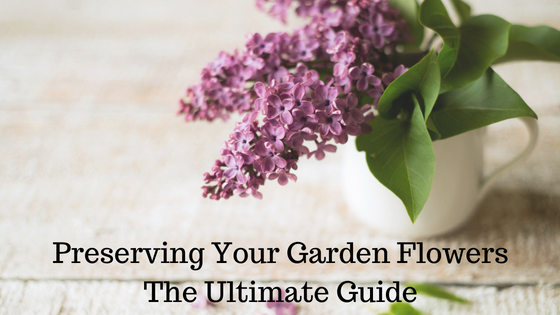
Garden Flowers
There are few things to rival the pure, unbridled joy of cutting flowers from your own garden, and arranging them in a beautiful vase. They’re beautiful in their own right, and they’ll act as a reminder of summer’s vibrancy as the nights shorten, and fall draws in. A nice vase of cut flowers will also form a lively focal point on the mantelpiece, table or countertop of your choice – making them an ideal way to brighten up dreary rooms.
Unfortunately, cut flowers can’t feed themselves, which means that they can be quite short-lived. Untreated, they’ll wilt in a matter of days, and you’ll be left with a ragged bunch of greying greenery that’ll do little to lift the space they’re sitting in. They’ll also start to smell after a little while too, which is never pleasant.
To help you make the most of this summer’s blooms, we’ve put together this guide, which aims to provide a series of top tips to help you preserve cut flowers. Read on to find out what to keep them in, how to cut them, and how to keep them happy once they’ve been sitting out for a couple of days:
1. Rest your flowers before you arrange them
Yep, you read that right! Flowers, like any plant, get stressed by the messy business of cutting. If you take fresh-cut flowers and start manhandling them into an attractive arrangement, you’ll exacerbate the release of stress chemicals and speed up the process of decay.
Instead, we’d strongly recommend putting the flowers in a bucket of room-temperature water, and storing them somewhere cool for 12 hours. This will give them time to perk up a bit, and ensure that they’re strong enough to handle the arrangement process.
2. Keep them well fed
You wouldn’t think of trying to keep cut flowers without water, so why is food a different matter entirely? The leaves, stem, and petals of your flowers still need a ready supply of nutrients to keep their shape and color, so make sure you immerse them in a vase that contains a small amount of flower food.
If your feeling thrifty, you can also make your own – just add about 5 tbsp of malt vinegar and some sugar to your water, and stir well before immersing your stems. The sugar will feed the flowers, and the vinegar will keep pesky bacteria under control – removing problems with mold, or unexpected drooping.
Some recipes for homemade flower food also call for aspirin or lemonade but we haven’t found any real benefit to adding either of these ingredients. We’ve also yet to see any real benefit to adding a coin to the water, and it’s worth pointing out that bleach will quickly rob your flowers of their color.
3. Change the water every day
This tip isn’t revolutionary, but it is the key to keeping cut flowers looking fresh. As mentioned above, the so-called ‘natural’ wilting of flowers is actually mainly a reaction to bacterial growth and making sure that you switch out the water each and every day helps to stop these pesky little critters from multiplying quite as fast. You won’t be able to stave off the inevitable forever, but you will be able to slow it down some, and you should notice a significant difference if you’ve previously left your flowers sitting in the same old water for days on end.
If you can, we would also recommend using distilled or filtered water whenever possible. Your flowers don’t really need the minerals found in natural water anymore, and the filtration process does help to minimize the bacterial load.
4. Sear the stems whenever you cut
Every time you change the water, you ought to cut a little more of the stem down, just to make sure that your keeping things nice and fresh. To make doubly-sure that your flowers don’t start dropping, you can also use this opportunity to dip the ends in boiling water for a few seconds. This seals in all of the juices that keep things looking nice and firm, and lends a little extra life to tired blooms.
5. Remove dropping blooms as quickly as possible
When flowers droop, they actually set off a cascade of chemical processes that culminate in the release of ethylene gas, a natural substance that is designed to send a ‘ripening’ signal to nearby flowers of the same species. In nature, this process is essential, but indoors, it makes the whole vase wilt that little bit faster.
To prevent this from happening, make sure you pull out any flowers that are starting to wilt.
6. Score rose stems
This last tip is specific to roses, or plants with woody stems that aren’t amenable to storage in a vase. To help improve the uptake of water or food, you should cut as normal, then make a vertical incision about 5 centimeters up the length of the stem. You can also ‘bash’ the ends to a pulp, but this does tend to look messier, and it’ll make the water in your vase cloudy too.
Hopefully, these tips will help keep your flowers looking nice and fresh, but if you have any questions, or want to debate the finer points of homemade flower food, we’d always be more than happy to hear from you! We love exchanging knowledge with gardeners, and we’re really passionate about helping people to get the most out of their flowers, so just drop us a message using the contact form on our site!


